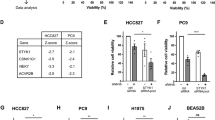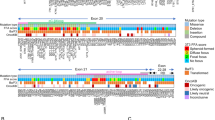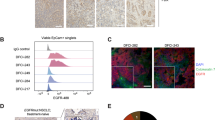Abstract
The adverse events associated with antitumour drugs have recently emerged as an increasingly significant clinical concern. Epidermal growth factor receptor tyrosine kinase inhibitors (EGFR TKIs) serve as pivotal therapeutic agents for non-small cell lung cancer (NSCLC). However, considerable interindividual variability exists in drug exposure, along with a high incidence and severity of adverse events. In this study, we quantitatively investigated the impacts of EGFR TKI exposure and other covariates on the severity of the maximum grade of drug-related adverse events (MDRAE) in NSCLC patients treated with EGFR TKIs. Data were collected from 277 patients treated with gefitinib, icotinib, afatinib or osimertinib. Population pharmacokinetic (PopPK) models were constructed for each drug, and individual exposure metrics were derived through model simulations. Normalized individual exposures to different EGFR TKIs based on their IC50 values and MDRAE data were integrated to develop an ordinal logistic regression model for an exposure–safety analysis. A user-friendly nomogram was subsequently designed. The probability of high-grade MDRAE was significantly associated with normalized exposure levels, a history of EGFR TKI treatment, sex and other factors. Model simulations revealed substantial interindividual variability in drug exposure and the probability of different grades of MDRAE for the same treatment regimen. This study quantitatively elucidates the influences of drug exposure and other critical factors on safety, thereby contributing to the formulation of individualized treatment strategies to prevent and promptly address drug safety-related issues.
This is a preview of subscription content, access via your institution
Access options
Subscribe to this journal
Receive 12 print issues and online access
269,00 € per year
only 22,42 € per issue
Buy this article
- Purchase on SpringerLink
- Instant access to full article PDF
Prices may be subject to local taxes which are calculated during checkout







Similar content being viewed by others
References
Siegel RL, Miller KD, Wagle NS, Jemal A. Cancer statistics, 2023. CA Cancer J Clin. 2023;73:17–48.
Reck M, Rabe KF. Precision diagnosis and treatment for advanced non-small-cell lung cancer. N Engl J Med. 2017;377:849–61.
Midha A, Dearden S, McCormack R. EGFR mutation incidence in non-small-cell lung cancer of adenocarcinoma histology: a systematic review and global map by ethnicity (mutMapII). Am J Cancer Res. 2015;5:2892–911.
Sequist LV, Yang JC, Yamamoto N, O’Byrne K, Hirsh V, Mok T, et al. Phase III study of afatinib or cisplatin plus pemetrexed in patients with metastatic lung adenocarcinoma with EGFR mutations. J Clin Oncol. 2013;31:3327–34.
Jänne PA, Ou SI, Kim DW, Oxnard GR, Martins R, Kris MG, et al. Dacomitinib as first-line treatment in patients with clinically or molecularly selected advanced non-small-cell lung cancer: a multicentre, open-label, phase 2 trial. Lancet Oncol. 2014;15:1433–41.
Jänne PA, Yang JC, Kim DW, Planchard D, Ohe Y, Ramalingam SS, et al. AZD9291 in EGFR inhibitor-resistant non-small-cell lung cancer. N Engl J Med. 2015;372:1689–99.
Zhao YY, Li S, Zhang Y, Zhao HY, Liao H, Guo Y, et al. The relationship between drug exposure and clinical outcomes of non-small cell lung cancer patients treated with gefitinib. Med Oncol. 2011;28:697–702.
Tiseo M, Andreoli R, Gelsomino F, Mozzoni P, Azzoni C, Bartolotti M, et al. Correlation between erlotinib pharmacokinetics, cutaneous toxicity and clinical outcomes in patients with advanced non-small cell lung cancer (NSCLC). Lung Cancer. 2014;83:265–71.
Rodier T, Puszkiel A, Cardoso E, Balakirouchenane D, Narjoz C, Arrondeau J, et al. Exposure-response analysis of osimertinib in patients with advanced non-small-cell lung cancer. Pharmaceutics. 2022;14.
Swaisland HC, Smith RP, Laight A, Kerr DJ, Ranson M, Wilder-Smith CH, et al. Single-dose clinical pharmacokinetic studies of gefitinib. Clin Pharmacokinet. 2005;44:1165–77.
Hu P, Chen J, Liu D, Zheng X, Zhao Q, Jiang J. Development of population pharmacokinetics model of icotinib with non-linear absorption characters in healthy Chinese volunteers to assess the CYP2C19 polymorphism and food-intake effect. Eur J Clin Pharmacol. 2015;71:843–50.
Brown K, Comisar C, Witjes H, Maringwa J, de Greef R, Vishwanathan K, et al. Population pharmacokinetics and exposure-response of osimertinib in patients with non-small cell lung cancer. Br J Clin Pharmacol. 2017;83:1216–26.
Kiang TK, Sherwin CM, Spigarelli MG, Ensom MH. Fundamentals of population pharmacokinetic modelling: modelling and software. Clin Pharmacokinet. 2012;51:515–25.
Kawata T, Higashimori M, Itoh Y, Tomkinson H, Johnson MG, Tang W, et al. Gefitinib exposure and occurrence of interstitial lung disease in Japanese patients with non-small-cell lung cancer. Cancer Chemother Pharm. 2019;83:849–58.
Nakao K, Kobuchi S, Marutani S, Iwazaki A, Tamiya A, Isa S, et al. Population pharmacokinetics of afatinib and exposure-safety relationships in Japanese patients with EGFR mutation-positive non-small cell lung cancer. Sci Rep. 2019;9. 18202.
Wang QQ, Yu SC, Qi X, Hu YH, Zheng WJ, Shi JX, et al. Overview of logistic regression model analysis and application. Zhonghua Yu Fang Yi Xue Za Zhi. 2019;53:955–60.
Xiong X, Zhang Y, Wang Z, Zhou C, Yang P, Du X, et al. Simultaneous quantitative detection of afatinib, erlotinib, gefitinib, icotinib, osimertinib and their metabolites in plasma samples of patients with non-small cell lung cancer using liquid chromatography-tandem mass spectrometry. Clin Chim Acta. 2022;527:1–10.
Freiwald M, Schmid U, Fleury A, Wind S, Stopfer P, Staab A. Population pharmacokinetics of afatinib, an irreversible ErbB family blocker, in patients with various solid tumors. Cancer Chemother Pharmacol. 2014;73:759–70.
Chan Kwong AHP, Calvier EAM, Fabre D, Gattacceca F, Khier S. Prior information for population pharmacokinetic and pharmacokinetic/pharmacodynamic analysis: overview and guidance with a focus on the NONMEM PRIOR subroutine. J Pharmacokinet Pharmacodyn. 2020;47:431–46.
Al-Huniti N, Feng Y, Yu JJ, Lu Z, Nagase M, Zhou D, et al. Tumor growth dynamic modeling in oncology drug development and regulatory approval: past, present, and future opportunities. CPT Pharmacomet Syst Pharmacol. 2020;9:419–27.
Shah RR, Shah DR. Safety and tolerability of Epidermal Growth Factor Receptor (EGFR) tyrosine kinase inhibitors in oncology. Drug Saf. 2019;42:181–98.
Gadkar K, Friedrich C, Hurez V, Ruiz ML, Dickmann L, Kumar Jolly M, et al. Quantitative systems pharmacology model-based investigation of adverse gastrointestinal events associated with prolonged treatment with PI3-kinase inhibitors. CPT Pharmacomet Syst Pharmacol. 2022;11:616–27.
Shulgin B, Kosinsky Y, Omelchenko A, Chu L, Mugundu G, Aksenov S, et al. Dose dependence of treatment-related adverse events for immune checkpoint inhibitor therapies: a model-based meta-analysis. Oncoimmunology. 2020;9:1748982.
Zhang Z. Missing data imputation: focusing on single imputation. Ann Transl Med. 2016;4:9.
Kwak SK, Kim JH. Statistical data preparation: management of missing values and outliers. Korean J Anesthesiol. 2017;70:407–11.
Aggarwal CC. An introduction to outlier analysis. In: Aggarwal CC, editor. Outlier analysis. Cham: Springer International Publishing; 2017, p. 1–34.
Singh V, Dwivedi SN, Deo SVS. Ordinal logistic regression model describing factors associated with extent of nodal involvement in oral cancer patients and its prospective validation. BMC Med Res Methodol. 2020;20:95.
Nakamura T, Obata JE, Hirano M, Kitta Y, Fujioka D, Saito Y, et al. Predictive value of remnant lipoprotein for cardiovascular events in patients with coronary artery disease after achievement of LDL-cholesterol goals. Atherosclerosis. 2011;218:163–7.
Kim JH. Multicollinearity and misleading statistical results. Korean J Anesthesiol. 2019;72:558–69.
Brant R. Assessing proportionality in the proportional odds model for ordinal logistic regression. Biometrics. 1990;46:1171–8.
David W, Hosmer SL. Assessing the fit of the model. In: Walter A. Shewhart SSW, editors. Applied logistic regression. John Wiley & Sons, Inc.; 2000. p 143–202.
Mandrekar JN. Receiver operating characteristic curve in diagnostic test assessment. J Thorac Oncol. 2010;5:1315–6.
Overgaard RV, Ingwersen SH, Tornøe CW. Establishing good practices for exposure-response analysis of clinical endpoints in drug development. CPT Pharmacomet Syst Pharmacol. 2015;4:565–75.
Joel S, Owen JF-K. Simulation basics. In: Introduction to population pharmacokinetic/pharmacodynamic analysis with nonlinear mixed effects models. John Wiley & Sons, Inc.; 2014. p. 265–84.
Demirel OF, Willemain TR. Generation of simulation input scenarios using bootstrap methods. Journal Oper Res Soc. 2002;53:69–78.
Shah DR, Shah RR, Morganroth J. Tyrosine kinase inhibitors: their on-target toxicities as potential indicators of efficacy. Drug Saf. 2013;36:413–26.
Cella M, Gorter de Vries F, Burger D, Danhof M, Della Pasqua O. A model-based approach to dose selection in early pediatric development. Clin Pharm Ther. 2010;87:294–302.
Knebel W, Gastonguay MR, Malhotra B, El-Tahtawy A, Jen F, Gandelman K. Population pharmacokinetics of atorvastatin and its active metabolites in children and adolescents with heterozygous familial hypercholesterolemia: selective use of informative prior distributions from adults. J Clin Pharmacol. 2013;53:505–16.
Chen J, Liu D, Zheng X, Zhao Q, Jiang J, Hu P. Relative contributions of the major human CYP450 to the metabolism of icotinib and its implication in prediction of drug-drug interaction between icotinib and CYP3A4 inhibitors/inducers using physiologically based pharmacokinetic modeling. Expert Opin Drug Metab Toxicol. 2015;11:857–68.
Ni J, Liu DY, Hu B, Li C, Jiang J, Wang HP, et al. Relationship between icotinib hydrochloride exposure and clinical outcome in Chinese patients with advanced non-small cell lung cancer. Cancer. 2015;121:3146–56. Suppl 17.
FDA Center for Drug Evaluation and Research. TAGRISSO: pharmacology reviews [updated 2015 Nov 4; cited 16 Aug 2024]. Available from: https://www.accessdata.fda.gov/drugsatfda_docs/nda/2015/208065Orig1s000PharmR.pdf.
FDA Center for Drug Evaluation and Research. Gilotrif: CLINICAL Pharmacology and biopharmaceutics reviews [updated 2012 Nov 14; cited 16 Aug 2024]. Available from: https://www.accessdata.fda.gov/drugsatfda_docs/nda/2013/201292Orig1s000ClinPharmR.pdf.
Chen J, Zheng X, Liu DY, Zhao Q, Wu YW, Tan FL, et al. Therapeutic effects and adverse drug reactions are affected by icotinib exposure and CYP2C19 and EGFR genotypes in Chinese non-small cell lung cancer patients. Asian Pac J Cancer Prev. 2014;15:7195–200.
Kobayashi H, Sato K, Niioka T, Miura H, Ito H, Miura M. Relationship among gefitinib exposure, polymorphisms of its metabolizing enzymes and transporters, and side effects in japanese patients with non-small-cell lung cancer. Clin Lung Cancer. 2015;16:274–81.
Westover D, Zugazagoitia J, Cho BC, Lovly CM, Paz-Ares L. Mechanisms of acquired resistance to first- and second-generation EGFR tyrosine kinase inhibitors. Ann Oncol. 2018;29:i10–i9.
Liu Q, Yu S, Zhao W, Qin S, Chu Q, Wu K. EGFR-TKIs resistance via EGFR-independent signaling pathways. Mol Cancer. 2018;17:53.
Özdemir BC, Gerard CL, Espinosa da Silva C. Sex and gender differences in anticancer treatment toxicity: a call for revisiting drug dosing in oncology. Endocrinology. 2022;163:bqac058.
Li Z, Zou W, Yuan J, Zhong Y, Fu Z. Gender differences in adverse events related to Osimertinib: a real-world pharmacovigilance analysis of FDA adverse event reporting system. Expert Opin Drug Saf. 2024;23:763–70.
Xu L, Xu F, Kong H, Zhao M, Ye Y, Zhang Y. Effects of reduced platelet count on the prognosis for patients with non-small cell lung cancer treated with EGFR-TKI: a retrospective study. BMC Cancer. 2020;20:1152.
Jiang Y, Su Z, Lin Y, Xiong Y, Li C, Li J, et al. Prognostic and predictive impact of creatine kinase level in non-small cell lung cancer treated with tyrosine kinase inhibitors. Transl Lung Cancer Res. 2021;10:3771–81.
He J, Su C, Liang W, Xu S, Wu L, Fu X, et al. Icotinib versus chemotherapy as adjuvant treatment for stage II-IIIA EGFR-mutant non-small-cell lung cancer (EVIDENCE): a randomised, open-label, phase 3 trial. Lancet Respir Med. 2021;9:1021–9.
Zhao Y, Cheng B, Chen Z, Li J, Liang H, Chen Y, et al. Toxicity profile of epidermal growth factor receptor tyrosine kinase inhibitors for patients with lung cancer: a systematic review and network meta-analysis. Crit Rev Oncol Hematol. 2021;160:103305.
Shi Y, Hu X, Zhang S, Lv D, Wu L, Yu Q, et al. Efficacy, safety, and genetic analysis of furmonertinib (AST2818) in patients with EGFR T790M mutated non-small-cell lung cancer: a phase 2b, multicentre, single-arm, open-label study. Lancet Respir Med. 2021;9:829–39.
FDA Center for Drug Evaluation and Research. Iressa: Pharmacology reviews: [updated 2014 Sep 17; cited 16 Aug 2024]. Available from: https://www.accessdata.fda.gov/drugsatfda_docs/nda/2015/206995Orig1s000PharmR.pdf.
Lavezzi SM, Borella E, Carrara L, De Nicolao G, Magni P, Poggesi I. Mathematical modeling of efficacy and safety for anticancer drugs clinical development. Expert Opin Drug Discov. 2018;13:5–21.
Ooi QX, Plan E, Bergstrand M. A tutorial on pharmacometric Markov models. CPT Pharmacomet Syst Pharmacol. 2025;14:197–216.
Lu T, Yang Y, Jin JY, Kågedal M. Analysis of longitudinal-ordered categorical data for muscle spasm adverse event of vismodegib: comparison between different pharmacometric models. CPT Pharmacomet Syst Pharmacol. 2020;9:96–105.
Xu C, Ravva P, Dang JS, Laurent J, Adessi C, McIntyre C, et al. A continuous-time multistate Markov model to describe the occurrence and severity of diarrhea events in metastatic breast cancer patients treated with lumretuzumab in combination with pertuzumab and paclitaxel. Cancer Chemother Pharmacol. 2018;82:395–406.
Suleiman AA, Frechen S, Scheffler M, Zander T, Nogova L, Kocher M, et al. A modeling and simulation framework for adverse events in erlotinib-treated non-small-cell lung cancer patients. AAPS J. 2015;17:1483–91.
Acknowledgements
The study was supported by the National Science Fund of China (No. 82104294), Fund for Fostering Talents of Peking University Third Hospital (No. BYSYFY2021016), and National Key R&D Program of China (No. 2020AAA0105203).
Author information
Authors and Affiliations
Contributions
TYZ, WL and BSC designed the research; LY, YEL, WL, LC, TYB, CL, EZG, TYW and PYL performed the experiments; LY and WL analyzed the data; and LY, WZJ, TYZ and WL wrote and revised the manuscript. All the authors reviewed the results and approved the final version of the manuscript.
Corresponding authors
Ethics declarations
Competing interests
The authors declare no competing interests.
Additional information
Publisher’s note Springer Nature remains neutral with regard to jurisdictional claims in published maps and institutional affiliations.
Supplementary information
Rights and permissions
Springer Nature or its licensor (e.g. a society or other partner) holds exclusive rights to this article under a publishing agreement with the author(s) or other rightsholder(s); author self-archiving of the accepted manuscript version of this article is solely governed by the terms of such publishing agreement and applicable law.
About this article
Cite this article
Yong, L., Liu, Y., Jian, Wz. et al. Modeling exposure-driven adverse events of EGFR TKIs in the treatment of patients with non-small cell lung cancer. Acta Pharmacol Sin (2025). https://doi.org/10.1038/s41401-025-01573-z
Received:
Accepted:
Published:
DOI: https://doi.org/10.1038/s41401-025-01573-z



